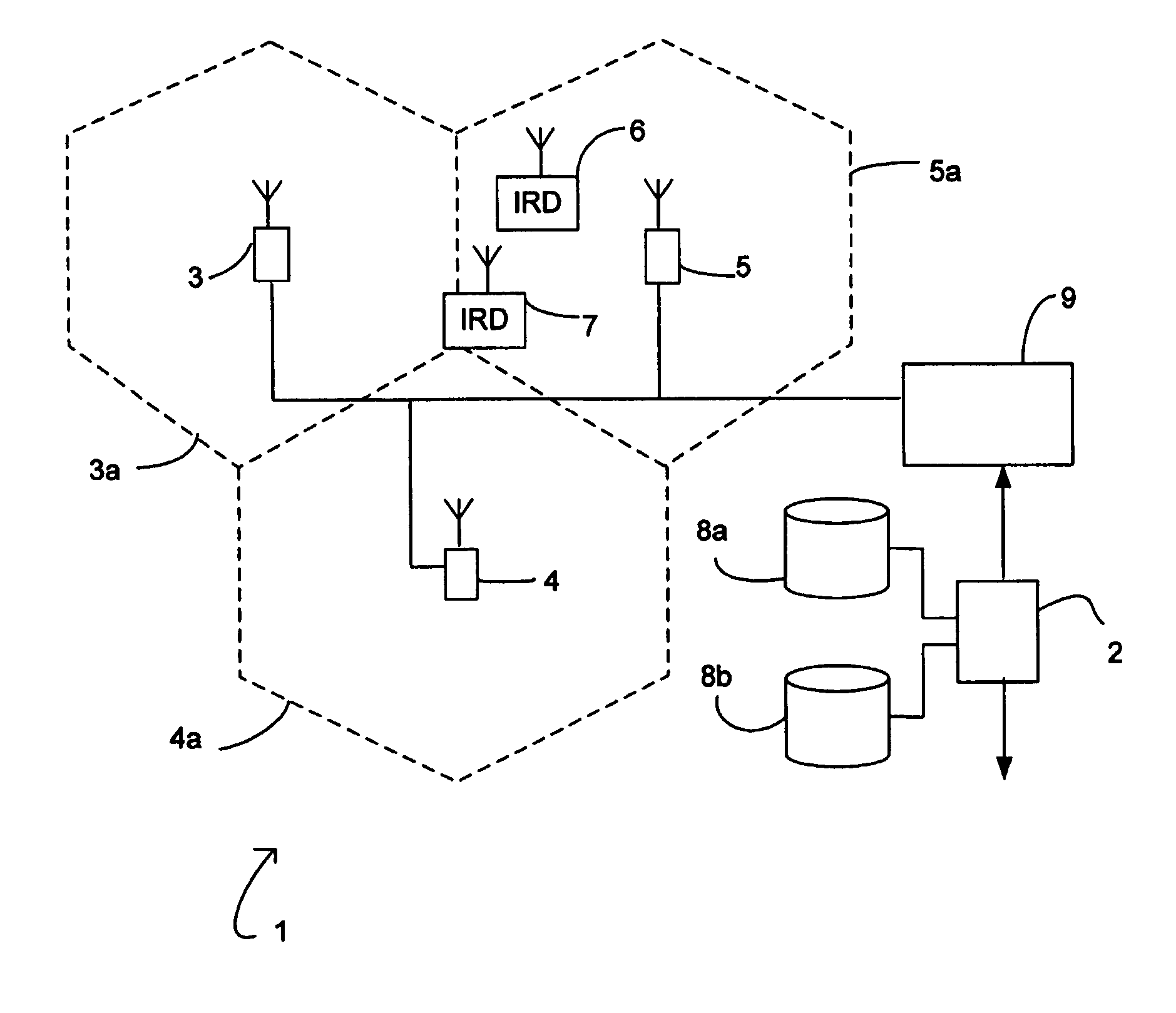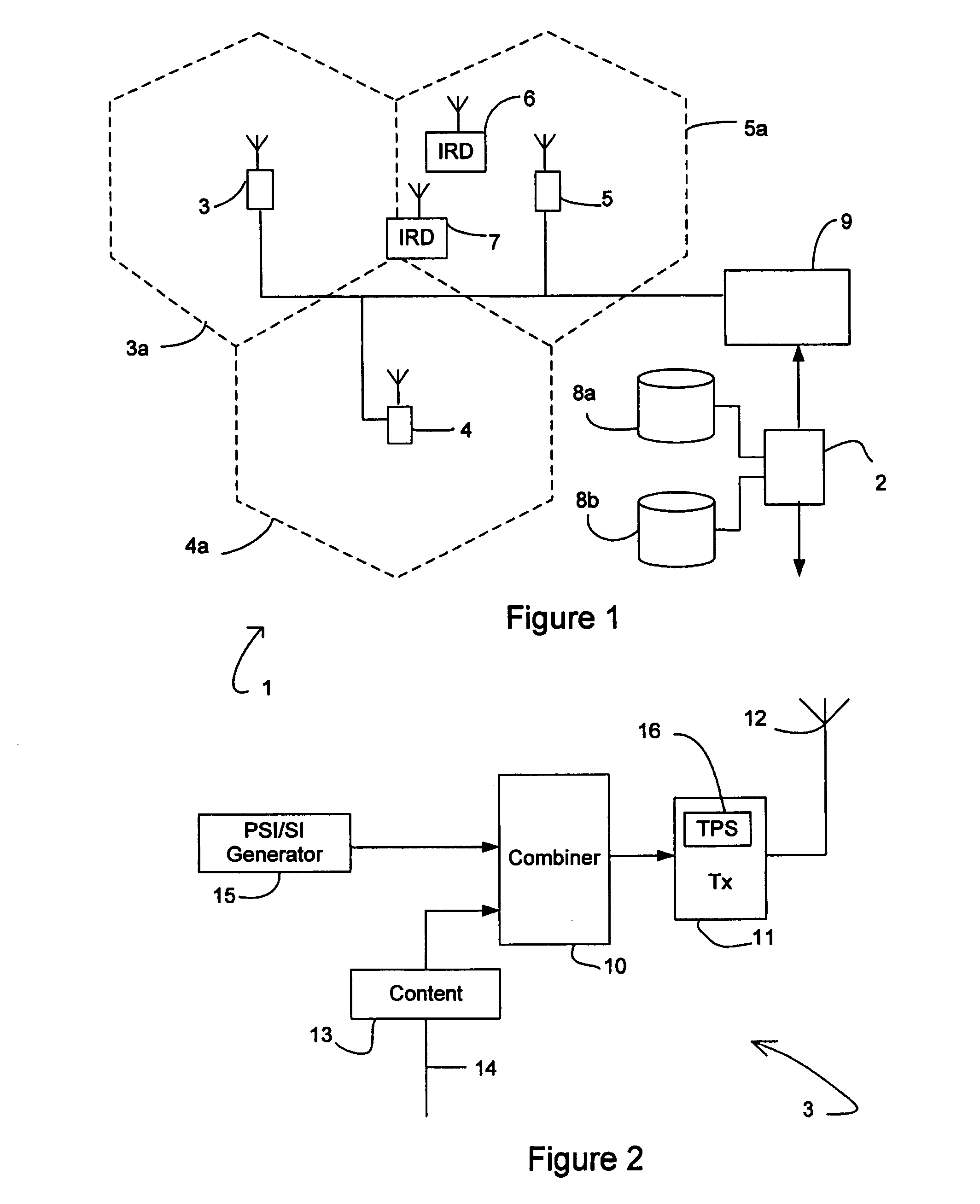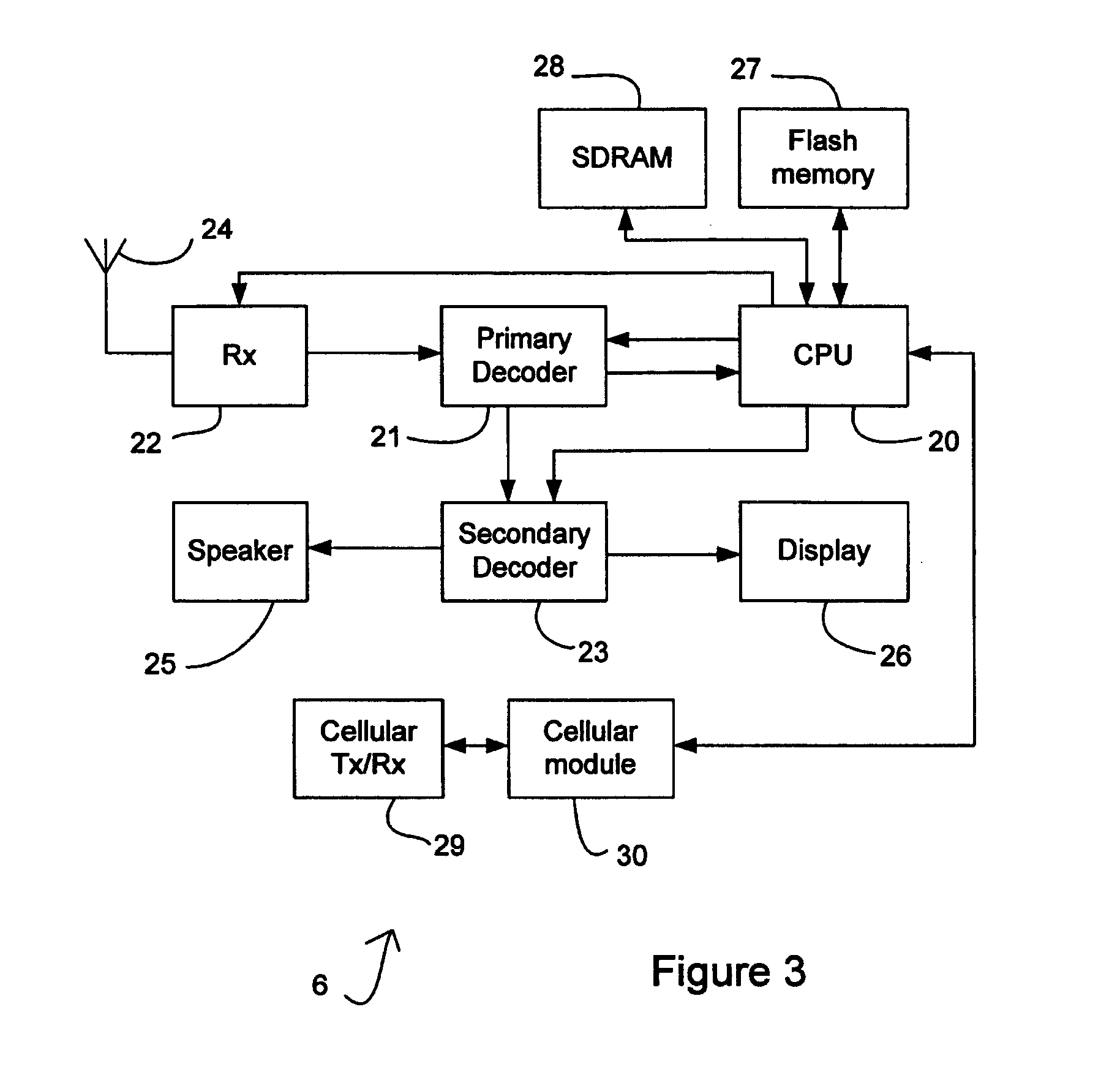Method and system to improve handover between mobile video networks and cells
a mobile video network and cell technology, applied in the field of network and cell handover procedures in wireless communication systems, can solve problems such as unsatisfactory power consumption, and achieve the effect of simplifying network signal search and improving receiver operation
- Summary
- Abstract
- Description
- Claims
- Application Information
AI Technical Summary
Benefits of technology
Problems solved by technology
Method used
Image
Examples
first embodiment
[0051] The first embodiment, which will now be described with reference to FIGS. 1 to 4, can allow more rapid discovery of other signals, using TPS bits and a descriptor called ‘other_network_descriptor’. More rapid discovery typically decreases power consumption during signal scanning (i.e. initialization). The described ‘other_network_descriptor’ can also be used by a receiver to determine when it should update its database, by performing signal scan.
[0052] Briefly, the TPS bits include an indication of whether other networks are available or not, and information concerning the available signals of other networks is signaled using the other_network_descriptor. This descriptor can be included for example in the NIT, or alternatively in the BAT (Bouquet Association Table). A receiver is able to detect the availability of other networks from the TPS bits transmitted in respect of one signal or network. The receiver can also determine information concerning these other networks using ...
second embodiment
[0081] When at step S4 tuning lock is achieved, the operation proceeds to step S8, where the TPS data is examined by the CPU 20. If the examination of the TPS data reveals that the network is a DVB-H network, the procedure advances to step S9. Otherwise, it is inferred that the signal does not emanate from a suitable network type (i.e. is not a DVB-H network signal) and the procedure retreats to step S5. Whether the network is a DVB-H network can be determined instead from the NIT for the signal, and in particular from the terrestrial_delivery system_descriptor field thereof. At step S9, the CPU 20 determines from the decoded TPS data, and in particular the bit thereof shown in Table 2, whether or not there are other available networks. If the relevant TPS bit is ‘1’, revealing that there are other available networks, an appropriate flag is set at step S10. The number of available network signals can be determined in this example by counting the number of networks identified in the ...
PUM
 Login to View More
Login to View More Abstract
Description
Claims
Application Information
 Login to View More
Login to View More - R&D
- Intellectual Property
- Life Sciences
- Materials
- Tech Scout
- Unparalleled Data Quality
- Higher Quality Content
- 60% Fewer Hallucinations
Browse by: Latest US Patents, China's latest patents, Technical Efficacy Thesaurus, Application Domain, Technology Topic, Popular Technical Reports.
© 2025 PatSnap. All rights reserved.Legal|Privacy policy|Modern Slavery Act Transparency Statement|Sitemap|About US| Contact US: help@patsnap.com



